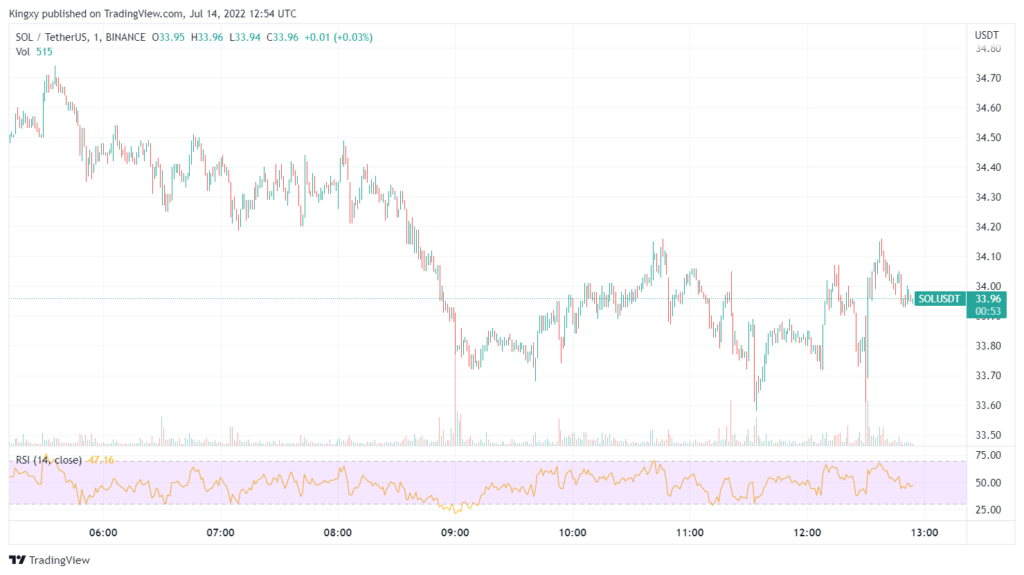
Solana’s native token may be in for tougher times ahead as a class action lawsuit against the protocol’s developers looms large.
As the bear market continues to ravage the cryptocurrency markets, few blockchain projects have been spared. One of the top alternative Layer 1 blockchains, Solana, has had a difficult year marked by multiple network halts and decreasing usage. One of the miseries the firm has also seen in recent times is a class action lawsuit.
In a report, an investor claims that Solana Labs, the entity behind the Solana blockchain, and other key players in the Solana ecosystem have been illegally profiting from SOL, the blockchain’s native token, and are suing them in a California federal court.
Mark Young the complainant, claimed in the complaint that the manner in which SOL was created and sold satisfies the three principles of the Howey Test, a case used by the US Supreme Court to determine whether a transaction qualifies as an “investment contract,” and thus becomes security subject to disclosure and registration.
This trend has affected the foundation financially on the other hand. According to Solscan, the monthly transactions of Solana at the start of the year were about 80 million; this number has decreased to 35 million.
The Market Trends For other Sol Tokens
Solana’s negative sentiment has rubbed off on other Solana-based tokens. Serum (DEX), Solend (lending), and Mango (derivatives trading) are all down over 85% year to date. Others like Tulip token (TLP) declined sharply in recent months, falling from a high of $0.68 in January to a low of $0.03 in March, SRM token has followed a similar trend to that of TLP, falling from $0.70 in January to $0.04 in March. This represents a decline of over 94%.
The Solend token (SEND) a native token has declined from $0.60 in January to $0.03 in March, a decline of over 95%. Finally, the Mango token`s (MANGO) price has declined from $0.50 in January to $0.02 in March, a decline of over 96%.
The Lawsuit And Its Implication
The lawsuit is still in progress, but it has cast a pall over the project. This development has been exacerbated by the bearish market condition, resulting in a further decline for the L1 blockchain.
Despite the fact that the future of this lawsuit is uncertain, it has already terrified some investors. Even if the Foundation is proven innocent of any wrongdoing, the damage may have already been done. With so much uncertainty surrounding the project, it’s no surprise that the ecosystem`s tokens may have tumbled.
The native token of the Solana network SOL has seen its price decline from $50 in June to below $35 later in the month. The Foundation token has also seen a sharp decline in value, declining by over 15 USD in the recent month.
While the lawsuit has certainly had an impact on the price of Solana tokens, it is not the only factor at play. The entire cryptocurrency market has been in a slump since mid-February, with Bitcoin (BTC) falling from $58,000 to $45,000 and Ethereum (ETH) declining from $2000 to $1300 in recent months. This general downturn in the market has also contributed to the decline of Solana tokens.
Despite the recent difficulties, Solana remains one of the most promising projects in the cryptocurrency space. The project has a strong team, a well-designed protocol, and a growing ecosystem of applications. If the lawsuit is resolved quickly and the market conditions improve, Solana tokens could stage a strong recovery.
Solana 24-Hour Price Action
Solana’s price currently hovers around $34.36, a decrease of 3.19% over the past 24 hours. The recent price action in Solana left the token’s market capitalization at $11,035,248,598.29 USD. The 24-hour trading volume for Solana was $1,409,173,819.62 USD.

SOL/USD 24-hour price chart: Source TradingView
Although the token’s price remains well below its all-time high, recent price action suggests that it may be bottoming out.
What do you expect of Solana’s price in the future? Let us know in the comments section.


